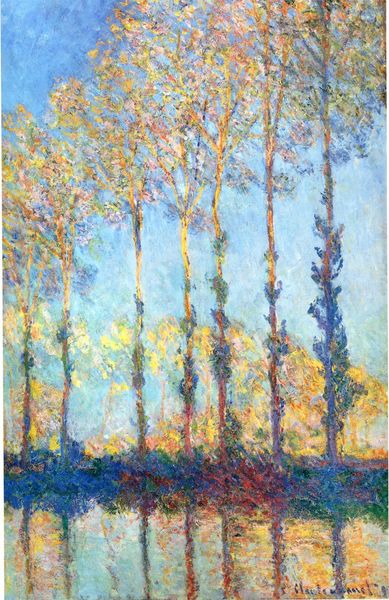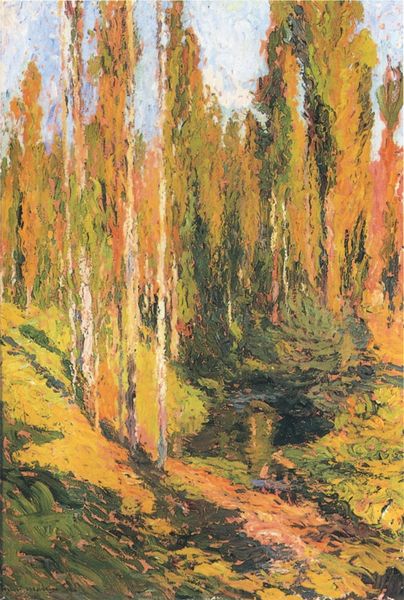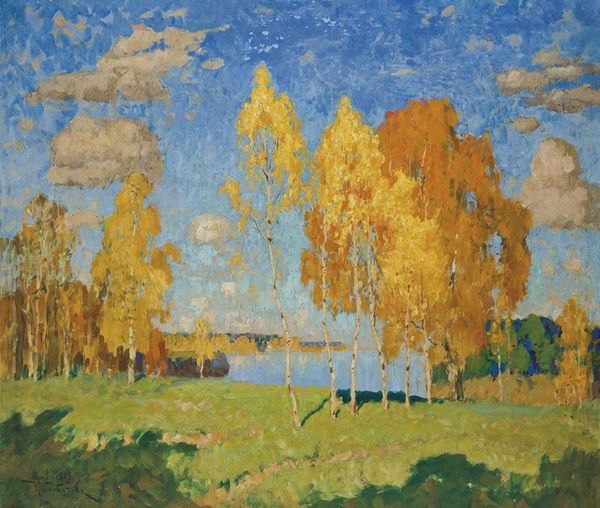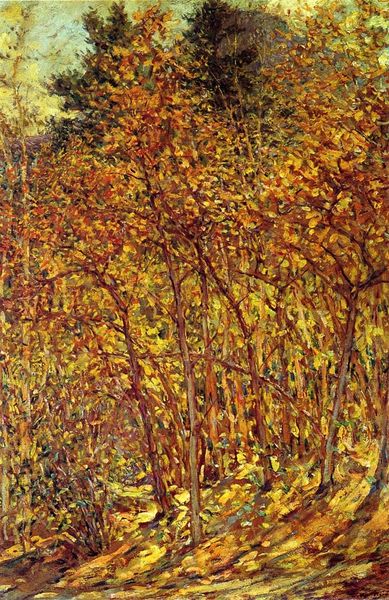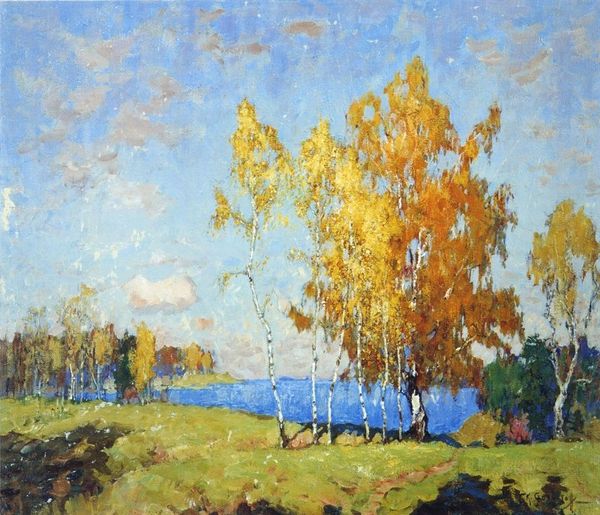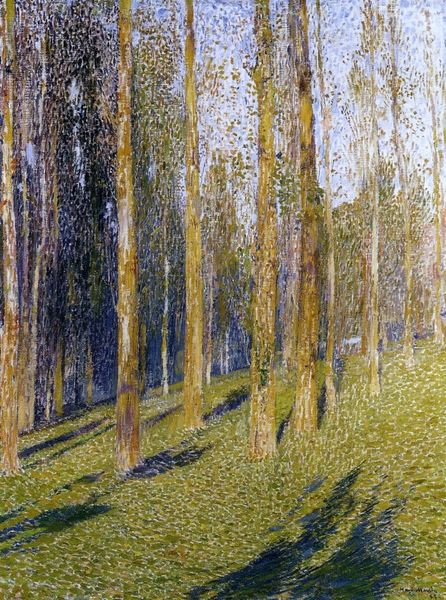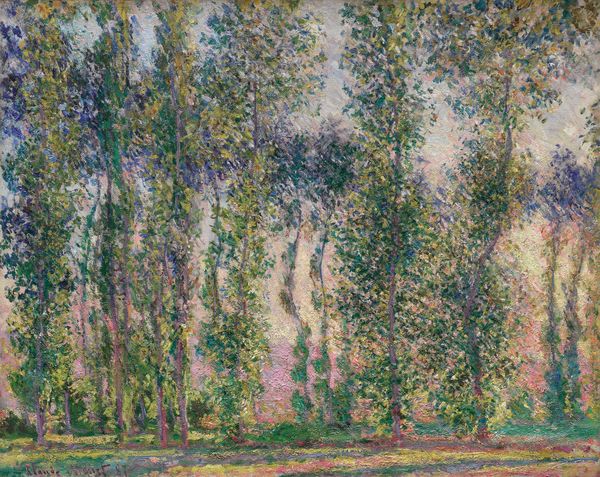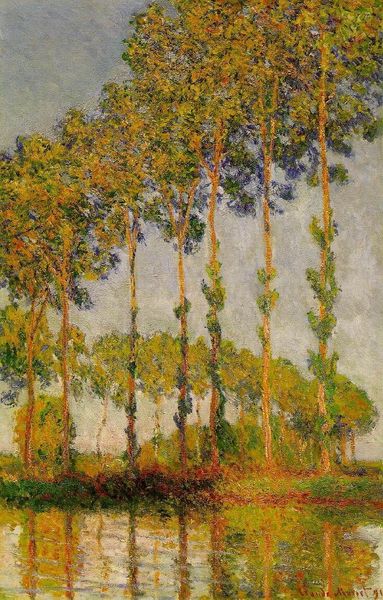
Copyright: Public domain
Editor: So, this is "Autumn Gold" by Konstantin Gorbatov, painted in 1932 with oil paints. The vibrant colors of the trees against the blue water… it almost feels like a memory, a romanticized view of nature. What do you see in this piece? Curator: I see echoes of Russia's past, wouldn’t you agree? Notice how the gold and fiery oranges dominate. Gold is an eternal symbol, connected in the Russian consciousness to Byzantium, to religious icons, to enduring value, and to the concept of spiritual richness. It's fascinating how the artist uses these visual cues to tap into our collective memory, even as he depicts a specific place and time. What emotions do the colors evoke for you? Editor: That's interesting. I mainly focused on the landscape, but I see what you mean. The gold feels almost…nostalgic, perhaps hinting at something lost or yearned for. Does the impasto technique play a part in this reading? Curator: Absolutely. The thick application of paint creates a textured surface. Look closely at how the light plays across it. It's almost like the painting itself is a reliquary, preserving not just an image but the very feeling of the place. Impasto highlights the sensory experience of the landscape, adding another layer to the iconographic message of memory and longing. Editor: So the artwork then uses specific symbols – gold, light – to suggest these themes? I never would have looked at it that way! I am now viewing this as a powerful reminder of a specific place and an emotion. Curator: Exactly! By understanding these visual symbols, we gain a deeper appreciation for the cultural memories embedded within the art, as well as for how artists convey the ineffable, and sometimes unconscious, experience of a certain time and space.
Comments
No comments
Be the first to comment and join the conversation on the ultimate creative platform.

